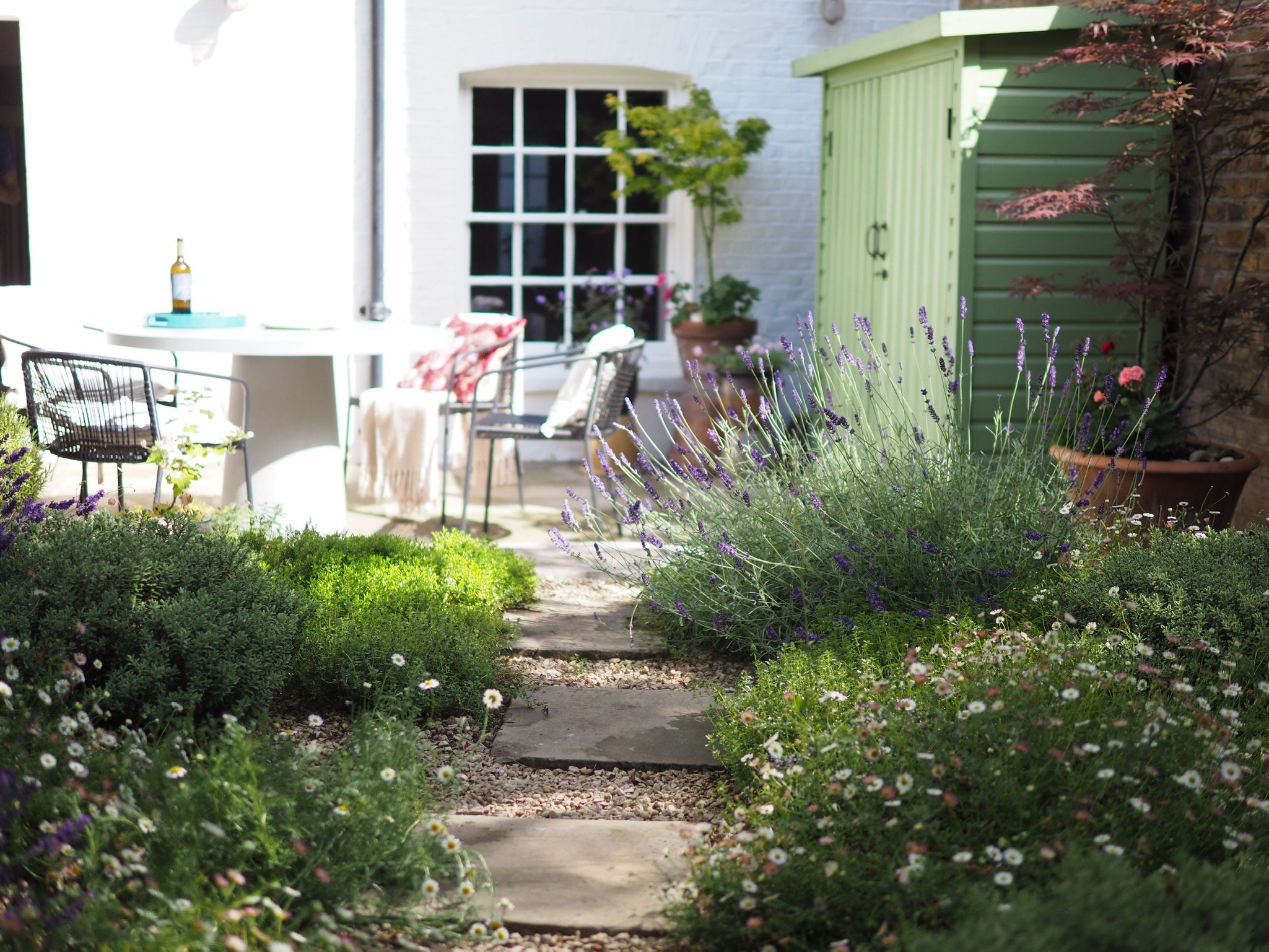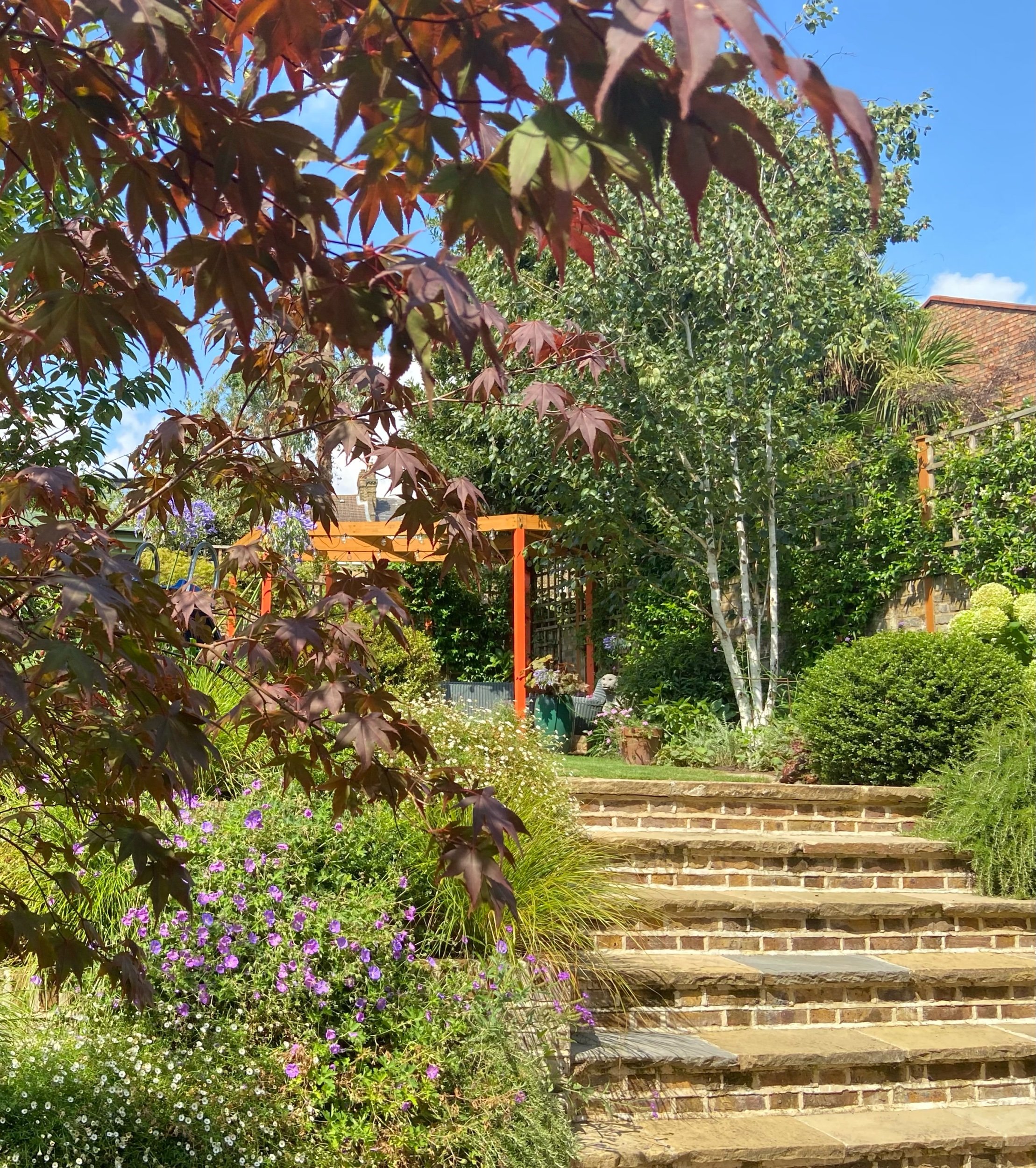Sustainable garden design ideas
Harriet Stigner
Following the record temperatures we experienced this summer, we owe it to our clients and the planet to consider the sustainability of our garden designs. Here are 7 steps that can help to future proof London gardens.
Including plants that have adapted to conserve water and withstand high temperatures, such as aloes and sedums, is a great way to improve the sustainability of your garden. They often create an unexpected and sophisticated impact in urban gardens, too.
1. The surprising benefit of weeding
Removing weeds is not only an aesthetic practice, it will help to direct limited water to the plants you most want to thrive during punishing conditions. We don’t recommend using weed-suppressing membranes as these rarely work long-term and interfere with ecological processes.
Taking inspiration from the Mediterranean can help to evoke the relaxing spirit of Provence, and ensure that your garden will withstand predicted London temperatures.
2. Think mediterranean
Average temperatures in summertime London are predicted to reach a Mediterranean 27 - 28 degrees by 2050. We often feature low maintenance mediterranean plants including olives, lavender, thyme, rosemary and salvias in our gardens. Not only are they adapted to tolerate hot, dry stretches, they can help to evoke a spirit of relaxation and are the perfect accompaniment to alfresco dining.
Silvery leaved mediterranean plants such as sage (Salvia officinalis) have adapted to withstand the heat. ©iNaturalist.org (Alina Majcen)
3. Seek out silvers
Many mediterranean plants have silvery coloured leaves. Whether this hue is owning to their waxy texture (as with olives), or fine hairs (as seen in sage or stachys), the silvery colour is a mechanism that helps the plant to refract sunlight, tolerate heat and preserve water. Planted together, they can create a subtle and sophisticated palette which looks superb in city gardens.
Pale lilac Astrantia photographed in Beth Chatto’s water garden. Chatto pioneered the sustainable practice of plating the ‘right plant in the right place.’ ©https://www.bethchatto.co.uk
4. ‘Right plant, right place’
It’s easy to underestimate how innovative Beth Chatto, the pioneer of this principle, was as one of the first British gardeners to group plants according to their natural habitat. Her Essex garden is fantastic for inspiration on Xeriscaping, the practice of planting slow-growing, drought-tolerant plants that conserve water. This magnificent gravel garden began as an experiment that transformed a car park to a luscious space that survives exclusively on rainwater, and her water garden is a breathtaking example of how to transform water logged land too.
Radio 4’s Book of the Week this week, Fen, Bog and Swamp by Annie Proulx, is a fascinating account of peatland destruction and its role in the climate crisis.
5. Say no to peat compost
Did you know that peat bogs found in UK moorland habitats store more carbon than all the nation’s forests combined? A crucial way that we gardeners can support the carbon capture of our planet, and the wildlife associated with these ecosystems, is to refuse any plants grown in peat compost. It’s incredible to think that this local action can extend far beyond our gardens and cities, having global significance in reducing atmospheric carbon worldwide.
(Those who are interested in learning more about these incredible ecosystems may enjoy listening to Radio 4’s fascinating Book of the Week this week - Fen, Bog and Swamp by Annie Proulx).
Maximising planted areas, using permeable surfaces, and creating a careful planting scheme, as we have done in this Islington gravel garden, all helps to conserve water.
6. Conserving rain water
Most London gardens are too small for the use of rainwater storage tanks, which shouldn’t be installed within 5 metres of a property, but nonetheless, maximising the amount of beautiful, planted surfaces in your garden design, and introducing permeable paving that allows water to penetrate, can help to conserve rainwater and reduce run-offs, as well as providing you with beautiful, living spaces to enjoy.
The use of reclaimed materials, sourced from sustainable suppliers helps to reduce our impact on the planet. These look incredibly beautiful, age well and harmonise with the numerous period properties we design for.
7. Sustainable professionals
Commissioning professionals who adopt sustainable practices is a powerful way of advocating for the planet. As well as adopting the principles described above wherever possible, at Living Gardens we ensure that all of our living plants, wood and building materials are sustainably sourced. We specify for a loose supply of aggregates, compost and mulches, and will consider the long-term efficiency of your planting schemes, focusing on everlasting structural plants and perennials for you to enjoy year after year.






